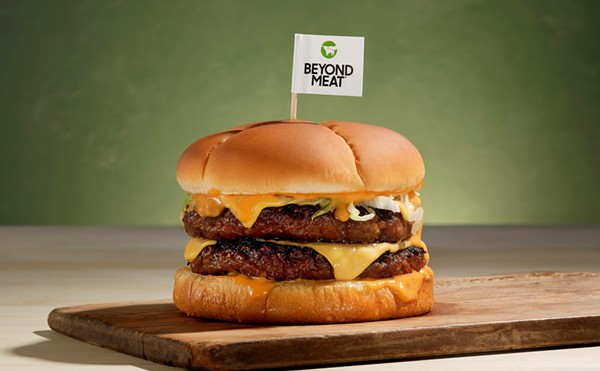Food is culture, in many ways, be it regional or even city specific. I’m one of those people who grew up thinking chili was the soupy, tomatoey stuff with beans, ground beef and spaghetti. It wasn’t until adulthood that I discovered chili can be many things.
That so-called “Louisville-style” chili still hangs around, and I’ve yet to find any definitive history of it. It just is. I found a menu online from Old Walnut Chili Parlor, which opened here in 1921, and it notes the chili, which was offered with different meats, contains “beans, spaghetti, tomatoes, oil and onions.” Louisville chili, folks.
That said, I have a half-stewed theory. Please bear with me.
Louisville is in close proximity to another type of chili, that being Cincinnati-style, a version you can readily get here in town from Skyline Chili.
That chili is said to have appeared in America in 1922 by way of a Macedonian immigrant named Tom Kiradjieff, and it includes Mediterranean spices, along with lots of cinnamon and a sweet flavor, thanks partly to the inclusion of chocolate. It generally is poured over spaghetti, making it more like a Greek spaghetti sauce than what I generally think of as chili. What I like about that style is that you can add beans or onions to your taste, whereas with Louisville chili, it’s all cooked right in. I like choices.
I trekked up to Green Bay, Wisconsin, in August because I am a football nerd, but also to take in the culture there, from walleye (a North American pikeperch) to elk meat to the cool accents to Spotted Cow beer. You probably see where I’m going with this: Green Bay has its own type of chili, too.
My girlfriend Cynthia and I had lunch at a place called Chili John’s, which dates to 1913 and originally operated as a downtown bar. Along the way, founder John Isaac decided to sell chili, and it took off, prompting him to rename the place Chili John’s in the 1930s. The place became a favorite of Green Bay Packers players and was a favorite stop of NFL color commentator John Madden whenever he would come to the city for a game.
Green Bay chili is similar to Cincinnati chili in that it’s essentially just a meat-based product served over spaghetti. Beans are optional, served as a second layer like with Cincy chili. You know those oyster crackers served free at Skyline? Isaac often is credited with inventing those crackers specifically for his chili, but that’s debatable. Either way, they’re on the table in Green Bay when you sit down to dine.
Here’s the key difference between Green Bay and Cincinnati chilies: While the meat in Green Bay chili contains many of the same Mediterranean spices as does Cincinnati chili, they are dialed way back. The chili is not sweet, and there seems to be no cinnamon (or chocolate, thankfully). Plus, it’s potentially spicier, if you order it that way, thanks to a special pepper-infused oil that is added to your liking. (Interestingly, at Chili John’s the more spicy you order it, the more meat you get. I guess this helps to further ramp up the spice.)
I promise I’m going somewhere with all this.
So, if Macedonia is in the southern part of Europe, near Italy, whereas Lithuania is northern, stuck between Poland and Russia, that sort of reflects where Green Bay and Cincinnati are in America, at least geographically. Sort of. I began thinking about the influx of German immigrants to Louisville in the middle 1800s and wondered if there was a cultural connection to our chili.
I started looking up German chili recipes and, while many of them involve sauerkraut and bratwurst, more of them lean toward Hungarian goulash, with main ingredients being tomatoes and/or tomato sauce, ground beef and/or pork, red beans, onions, cumin, garlic and other such ingredients — just the kind of stuff used in Louisville-style chili. The difference? No spaghetti.
So, Germany is west of both Macedonia and Lithuania, and Louisville is southwest of Cincinnati (although due south of Green Bay). Maybe those spaghetti noodles made their way into Louisville chili by way of Greek and Mediterranean traditions trickling into Louisville from Cincinnati and up north. Sure, we don’t serve our chili over the spaghetti, but the noodles had to get there somehow, right?
Told you it was half-stewed. Still...
And to think, I always assumed Mom was adding spaghetti to make the pot last three days, instead of just two. Little did I know she was masterfully fusing cultural culinary traditions from all across Europe into a big green Corning-Ware bowl. I don’t give that woman enough credit.







